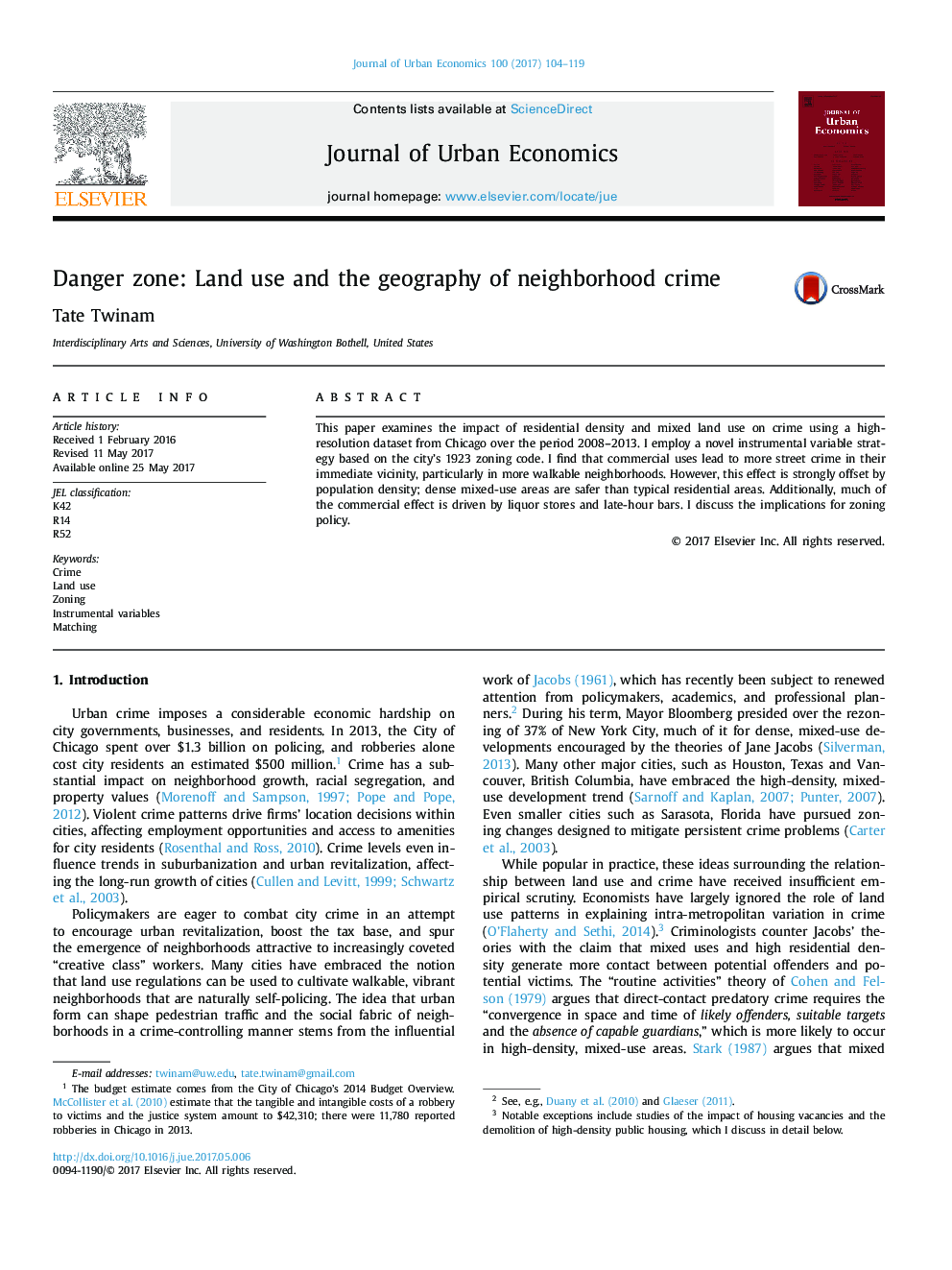| Article ID | Journal | Published Year | Pages | File Type |
|---|---|---|---|---|
| 5101934 | Journal of Urban Economics | 2017 | 16 Pages |
Abstract
This paper examines the impact of residential density and mixed land use on crime using a high-resolution dataset from Chicago over the period 2008-2013. I employ a novel instrumental variable strategy based on the city's 1923 zoning code. I find that commercial uses lead to more street crime in their immediate vicinity, particularly in more walkable neighborhoods. However, this effect is strongly offset by population density; dense mixed-use areas are safer than typical residential areas. Additionally, much of the commercial effect is driven by liquor stores and late-hour bars. I discuss the implications for zoning policy.
Related Topics
Social Sciences and Humanities
Economics, Econometrics and Finance
Economics and Econometrics
Authors
Tate Twinam,
